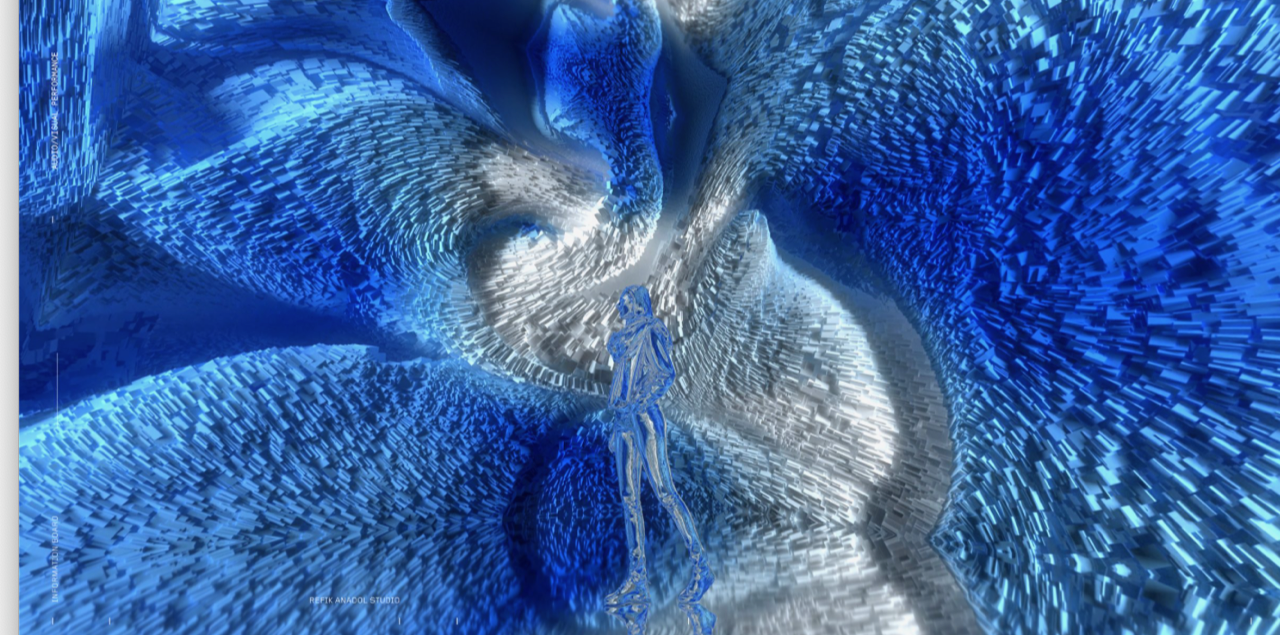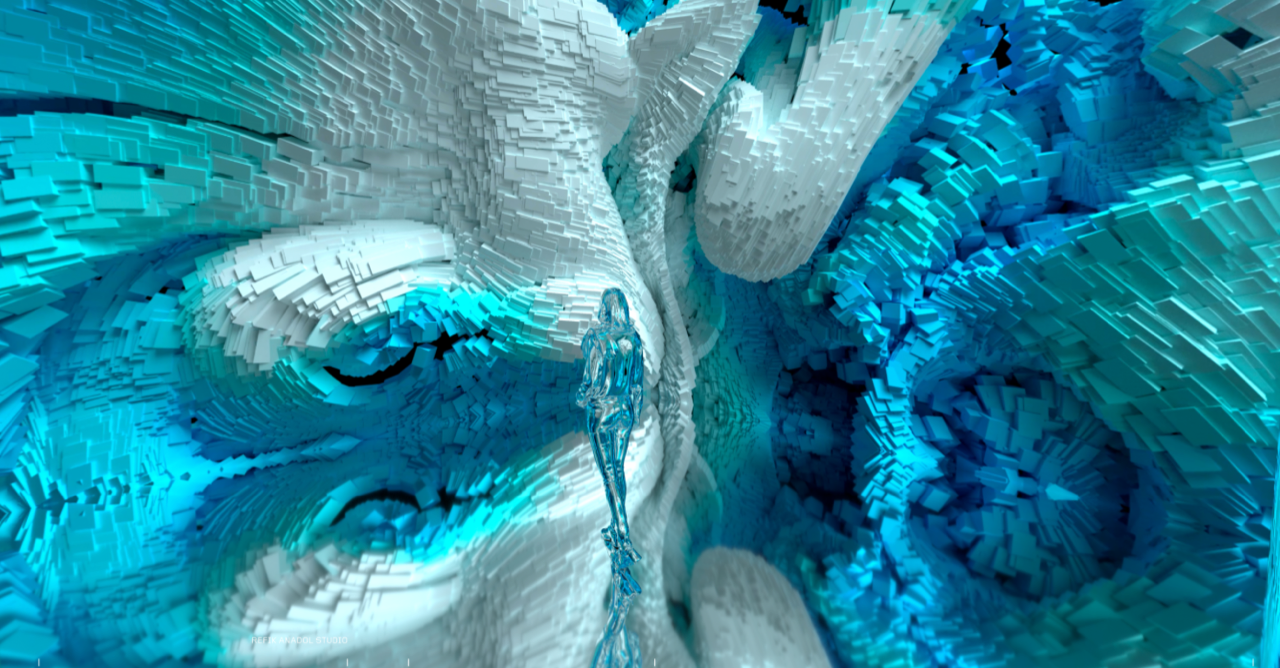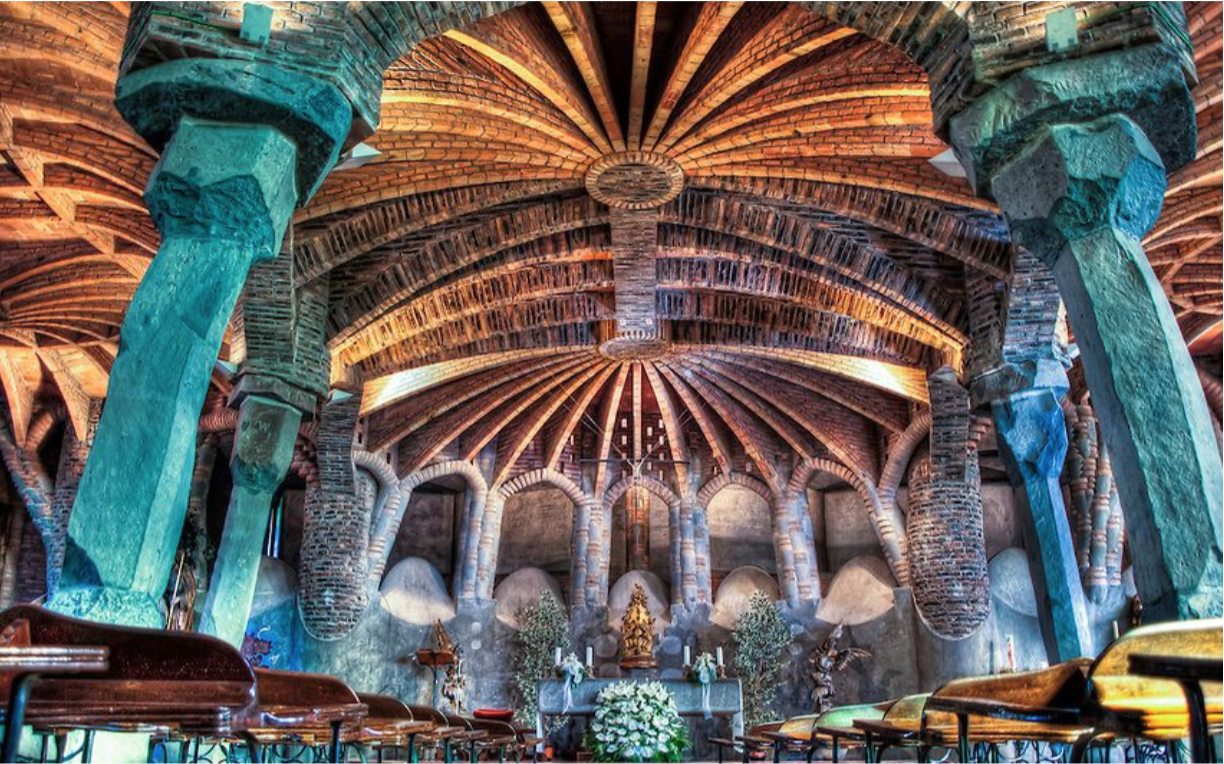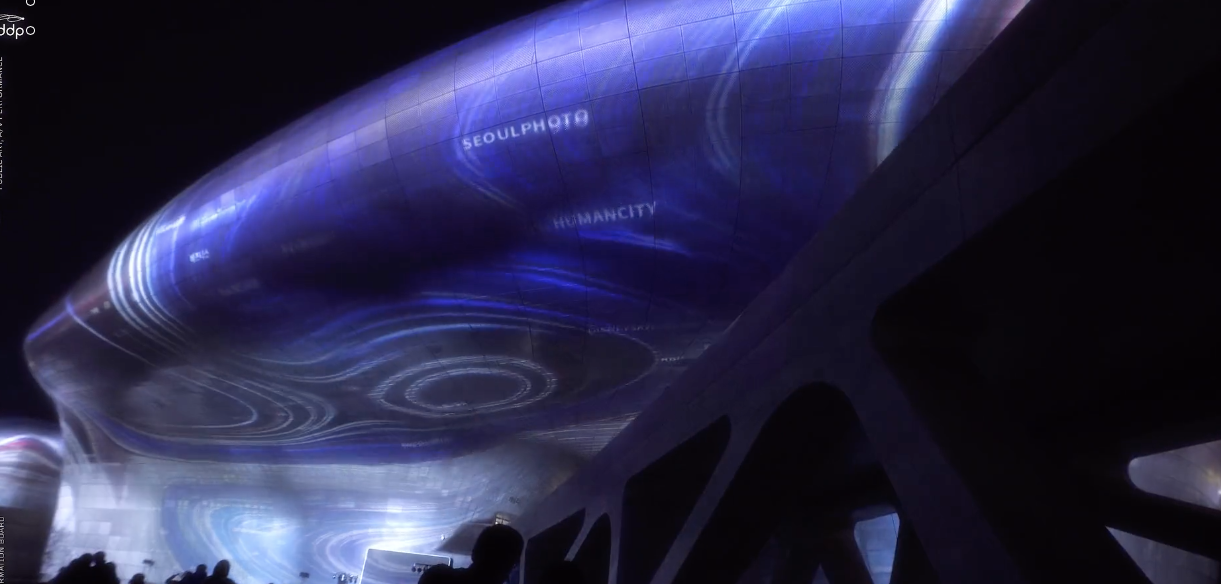
Radical Visualizations
by Victoria Thomas
Data. The word didn’t send shivers up the collective Soolip spine until just now, when we discovered the fever-dream called Refik Anadol Studio in Los Angeles. The melty, flowy, digital ecstasy-state invoked by Refik Anadol @REFIKANADOL, a Turkish-born self-described “pioneer in the aesthetics of data and machine intelligence,” dares us to embark on a machine hallucinations and fluid dreams, a spacey odyssey from which there is no returning.
To get even the slightest insight into the experience, time-travel back to 1968, where you are in a darkened movie theatre watching the new film from Stanley Kubrick.
Star Gate sequence, from “2001: A Space Odyssey”
The “Star Gate” sequence of re-entry to earth seen in the final segment of the film now seems tame. At the time, it left movie-goers gasping for breath by its beauty and power.
Star Gate sequence, from “2001: A Space Odyssey”
The effect was created using a “Slit Scan” machine developed by Douglas Trumbull, which allowed the filming of two seemingly infinite planes of exposure. Additional effects for the sequence were created applying colored filters to aerial landscape footage, and filming chemical interactions.
The effects in “2001: A Space Odyssey” required $6.5 million of Kubrick’s $10.5 million budget, a fact which is in itself breathtaking. Add to this that the effects were achieved without the benefits of computer technology, another fact which makes them all the more stunning today, more than a half-century later.
Kubrick left his audiences whipsawed by the emotional content of a technology which only the most technologically literate could begin to grasp. The same may be said of the entire film, which barely has dialogue. Likewise, the impact of Anadol’s immersive installations, audio/visual presentations, and data-paintings and sculptures feel like an extension of this experience of wonder, even in our jaded times. While the calm-voiced HAL was the villain in Kubrick’s film, Anadol challenges us to consider the creative potential of machines. Using data as his medium, Anadol identifies the “neural network of a computerized mind as a collaborator.”
How to experience the trippy, slippy-slidy genius of Refik Anadol?
His forms are shape-shifters, starting with data paintings and sculptures, meaning that the architecture of the pieces are datasets, or points of data: dates in history, for example.
By plotting the dates on a plotter (makes sense so far, right?), a map or diagram is created. This plotting, mapping, and tracking are part of our everyday lives, whether we’re fully aware (or fully consensual) or not. Every time we tap our phones or any other digital keyboard, we’re sending our digital DNA out into the metaverse for bots, hackers and pirates to collect, interpret and use to sell us everything under the sun.
In Anadol’s case, data serves as the pencil-sketch for a hallucination, or the scaffolding for a floating, psychoactive cathedral—consider his “Infinity Room” -- that flashes up from the ether, then disappears like the Cheshire Cat, leaving only a shimmering, shimmying neural afterglow.


DATALAND, one of Anadol’s current projects, is described by the artist as “…a turning point in the data and AI aesthetics at the convergence of cutting-edge neuroscientific experiments and virtually enhanced physical reality.” The site goes on to invite interdisciplinary collaboration between Anadol’s studio, the world’s leading neuroscientists, architects, AI and computer graphics pioneers, olfactory and real-time autosensing technologies. The mere mention of an olfactory element made our nostrils flare. Really?
It’s way more than “Laserium” redefined. Beyond the current applications in gaming and video displays, this trippy trajectory suggests the possibility of interactive buildings and cities. Anadol’s site further declares: “…we will create a new vocabulary of immersive aesthetics, we will architect unprecedented spaces and invent cutting-edge poetic algorithms for new meditative experiences in metaverse.”
“NATURE DREAMS" by Refik Anadol . . .
drenches viewers in the artist’s unique pareidolia paradise-cum-Ayahuasca Rorschach-test, suggesting super-magnified, pollen-laden flower stamens, and insect-parts







Granted, the vocabulary is a little over our heads (though perhaps not yours). So as a reality-check, Soolip showed some of Anadol’s glowing, liquid images to five bright children under the age of ten. Here’s what they said about the art:
Is it bubble-wars under water?
If an octopus was a candle, and it was melting.
Squishy inside my tummy.
Somebody’s brain thinking about a smoothie.
Aliens trying to say something.
SO GROSS! Can we see it again?
Although the roiling, writhing mindscapes generated by Anadol and his team represent the newest foray into the cyberfrontier, those who lived through the Summer of Love may feel pangs of nostalgia. Perhaps for midnight light-shows at the Fillmore, not to mention flashbacks from the 1966 classic, “Fantastic Voyage”, where Raquel Welch clad in a gleaming white vinyl wetsuit leads a team of scientists to destroy a blood-clot in the brain of a two-timing (the mission takes place in the midst of the Cold War). The twist: they remove the clot by miniaturizing their submarine and themselves down to microscopic size, allowing them to be injected into the patient’s bloodstream. Entering at the carotid artery, they whizz through his stilled heart, fight off clingy antibodies, blast that pesky clot to Kingdom-come, ditch their jacked-up ride, and exit via the optic nerve aboard a tear-drop, moments before they return to normal human size.
What reads as high camp for us today was considered a breakthrough in 1966, fusing sexy sci-fi with waves of groovy psychedelia. At the time of the film’s release, critics scoffed at references to futuristic medical procedures including heart transplant surgery and endoscopy, which now are commonplace.
Here, the miniaturized submarine called Proteus, reduced to the size of a microbe, makes its way through red blood platelets in the 1966 film “Fantastic Voyage.”
What is most surprising about Anadol’s emerging body of work is its sensory, organic warmth.
Portrait of Los Angeles based digital neuronaut, Refik Anadol. Photograph by Efsun Erkilic, used with the permission of the artist.
Not surprisingly, the artist compares his imagery to the architecture of Gaudi, structures which, in their day, were likened to the rotting skeletons of fish.
The melting, organic, post-Art Nouveau shapes of Gaudi’s architecture inform Anadol’s immersive video creations.
Unlike the steely science of past generations, this artist’s visions seem more human than robotic, synchronizing miles of code with human synapses, and the clockwork of the stars.
“Seoul Light” — Public art performance, Seoul, Korea
Photo of Refik Anadol by Efsun Erkilic. This image and all images and links to Anadol’s work used with the permission of the artist. All other images and links are common domain, via pexels.com, unsplash.com, Wikimedia Commons.com













